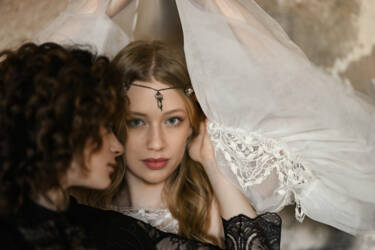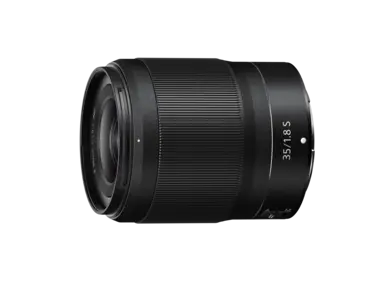What is bokeh (and how should I use it)?
The magic of blur, why it’s so pleasing and how to get it right
It seems strange now that in 200 years of photography we’ve only had one word for a pleasingly blurry background (or foreground) since the late 1990s. Not that the effect didn’t exist before that – it just didn’t have a name. Then, in 1997, Photo Techniques magazine published articles about the effect, the editor at the time used an English spelling of the Japanese word for blur to describe it, and bokeh was born. And, for the record, the pronunciation is ‘bo’ as in bowl and ‘ke’ as in Kenneth, with each syllable stressed equally.
Nikon Team

Understanding depth of field
Bokeh is all about the depth of field of an image. When you capture an image, the depth of field is the certain distance from the camera where everything is in focus. The depth of field can be deep (where the everything from the minimum focus distance of the lens to infinity is in focus) or extremely shallow (where, for example, the nose of a face-on portrait is in focus, but the ears are not).
So, how do you control the depth of field to get the effect that you want? Most photographers starting out believe that the way to perfect bokeh is via larger and larger apertures. And, yes, it’s true that larger apertures do make bokeh more easily accessible. But it’s not always as simple as that.
Manipulating depth of field
Let’s start with the basics. You can make the aperture (the hole where the light gets in) on a lens smaller or larger. The larger the aperture, the more light gets in, letting you shoot in lower light conditions. Another consequence of opening up the aperture is that it makes the depth of field on your image shallower. So, for example, a lens wide open at f/2.8 will have a shallower depth of field than when the same lens is closed down to f/11 (the smaller the aperture, the bigger the f-stop number).
Aperture f/4.2 on the NIKKOR Z DX 16-50mm f/3.5-6.3 VR with the Nikon Z 30
However, depth of field is also affected by other factors. One is the focal length of your lens. The longer the focal length, the shallower the depth of field. Shooting a portrait with a 100mm lens 1m away from the subject will usually give you more blur than shooting from the same distance with a 50mm lens, if all the other settings are the same.
Another way to affect depth of field is to get physically closer to your subject. The closer you are, the stronger the blur will become in the foreground and background. The distance between the subject and background will also have an effect – the further away the subject is from the background, the more blurred that background will be. Although an f/2.8 and faster (f/1.8 or f/1.4 for example) lens will give you lovely bokeh, it is also possible to create it with lenses at f/4 and f/8 by combining the techniques above.
Aperture f/1.7 on the NIKKOR Z DX 16-50mm f/3.5-6.3 VR with the Nikon Z 30
There are quite a few things to take into consideration when setting up and making creative decisions about how much bokeh you want, where you want it, and how you want to use it.
Now let’s talk about quality. Not all blurs are created equal, and a lot depends on the construction of your lens. The ‘best’ bokeh is often considered to be where points of light are blurred in a way that is as circular as possible. The number and shape of iris blades that form the aperture is important here. Typically, better lenses have nine blades whereas kit lenses tend to have seven. More expensive lenses also tend to have more curved blades, resulting in a sharper circle. The new NIKKOR Z 135mm f/1.8 S Plena – a new bokeh monster lens – has 11 curved diaphragm blades offering stunning bokeh.
Get creative with bokeh
Portraits
For portraits, it’s good to have separation between the subject and the surroundings so that the viewer concentrates on the subject. But the amount of separation can have a dramatic effect on the final image. Shooting with gentle bokeh can tell a story about the subject, as it provides separation but still lets the viewer have some content of what the background contains. No bokeh at all requires a lot of careful composition so that the subject is not lost in a jumbled background. Conversely, too much bokeh (yes, there can be such a thing) can take away context from a shot, making the story of the portrait less clear.

Macro
Macro lenses (those that can project an image of a small subject on to the sensor at a ratio of 1:1) are fantastic for bokeh, because the increased magnification creates a shallow depth of field, even when at a higher f-stop. For those on a budget, the NIKKOR Z MC 50mm f/2.8 is a great prime lens that can handle an enormous number of styles and situations, from street photography and even landscapes through to true 1:1 macro shots. At the other end of the scale, the NIKKOR Z MC 105mm f/2.8 VR S is a pro-level lens for close-up work that delivers superb beautifully rounded bokeh.


Not just for the background
Although bokeh is often used to separate a subject from the background, don’t forget to try the other way, separating the subject from the foreground. In portraiture and fashion, this is a popular technique to create a different type of depth to images, putting a subject behind a curtain of small lights, for example, or on an outdoor shoot placing the subject behind flowers and grasses.

Make bokeh the star of the show
With a great lens and the right situation, you can create beautiful images where bokeh is the star of the show. A city skyline at night that is all bokeh can take on an abstract feel. You can experiment with this technique at home, too, with a cheap set of fairy lights. Open your lens up as wide as possible, focus on a clear area in front of the lights and check out the results.

Best lenses for bokeh
You can achieve bokeh at f/4 and even f/8 but, for everyday use, a lens with an f/2.8 aperture is where it starts to become easier to achieve (and is one of the reasons f/2.8 is so popular). If you’re a beginner, the NIKKOR Z DX 24mm f/1.7 prime – with its seven rounded diaphragm blades – will deliver you superb bokeh at a great entry-level price. You can read more about the stats of the DX 24mm prime here and how to make the most of the lens here.
Plus, the NIKKOR Z 28-75mm f/2.8 is an outstanding zoom lens at an affordable price, while the NIKKOR Z 70-180mm f/2.8 gives you longer focal reach and that all-important f/2.8 bokeh. For faster (i.e. larger aperture) lenses, NIKKOR Z primes offer some wonderful options, from the NIKKOR Z 40mm f/2, which delivers beautiful bokeh, the NIKKOR Z 50mm f1/8 S ‘nifty fifty’ that is a fabulous go-to lens for a variety of subjects, the NIKKOR Z 85mm f/1.2 S loved by portrait shooters for its bokeh quality, right up to the NIKKOR Z 58mm f/0.95 Noct. Ultimate bokeh-lovers will be drawn to the NIKKOR Z 135mm f/1.8 S Plena, deemed a ‘modern legends of a lens.’ For its stats click here, or for the best tips and tricks for added bokeh creativity read more here.
Dive right in
Discover the NIKKOR Z DX 24mm f/1.7

Unlock greater creativity









